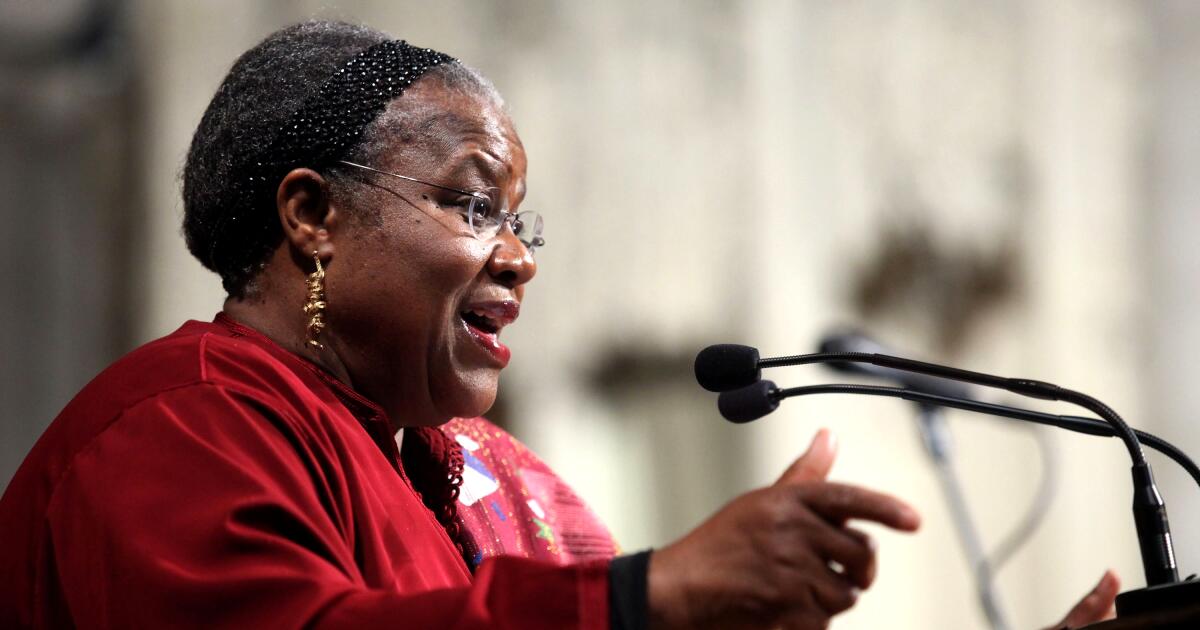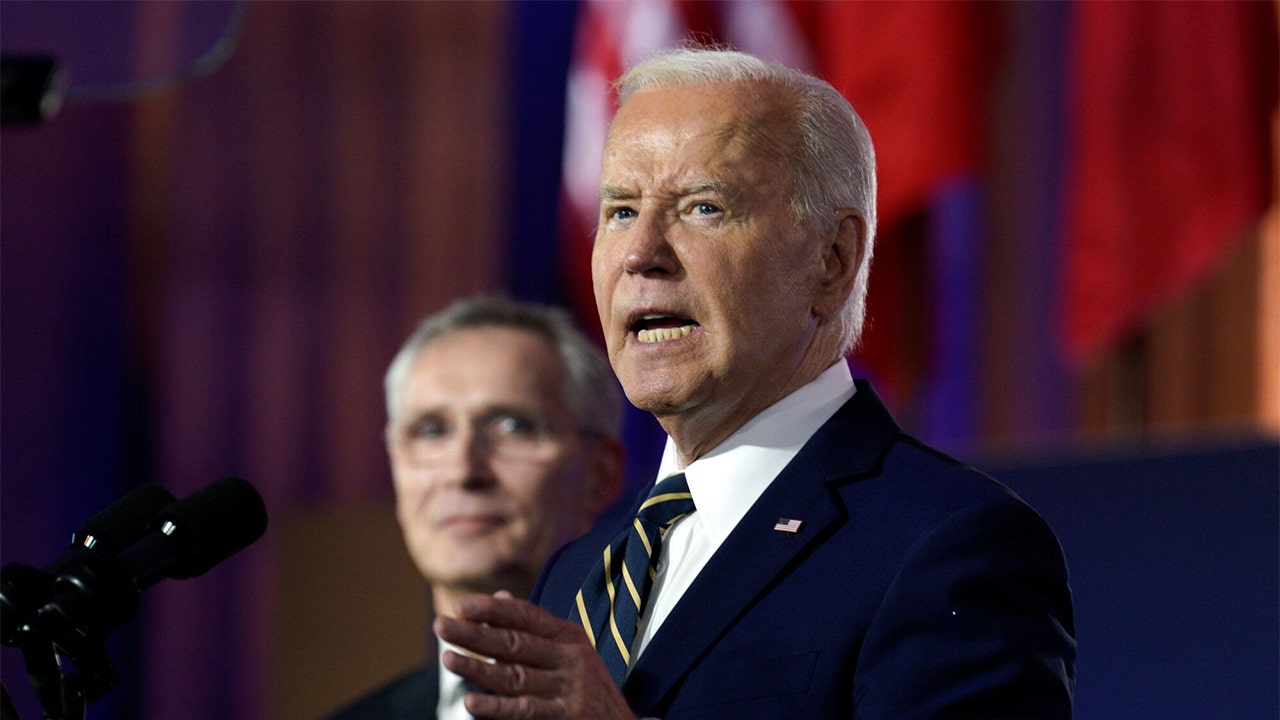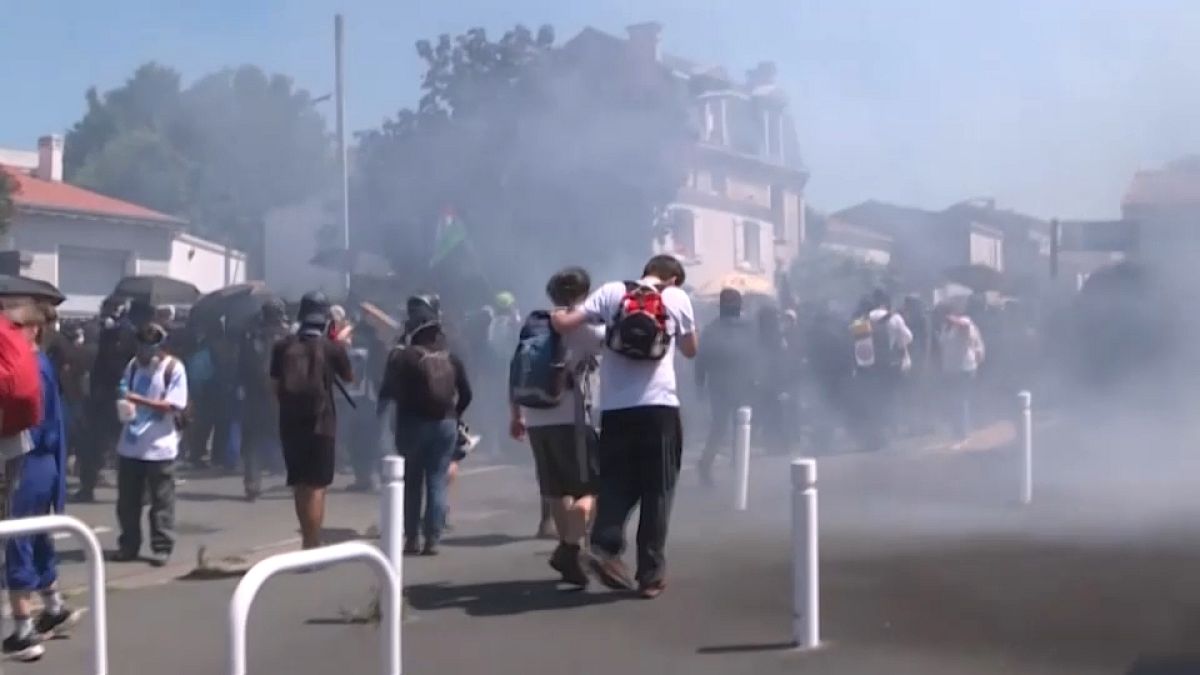Entertainment
The Anthony Ramos 'Twisters' chase and blockbuster Hollywood hustle

Since breaking out in the hit musical “Hamilton” in 2015, Anthony Ramos has moved from Broadway to the big screen, starring alongside Lady Gaga in “A Star Is Born” and earning a Golden Globe nomination for his leading “In the Heights” turn as Usnavi.
He has faced down titans in “Godzilla: King of the Monsters” and teamed up with the Autobots in “Transformers: Rise of the Beasts,” but last summer, while shooting “Twisters,” Ramos says, “S— got real.”
A standalone sequel to the 1996 disaster film “Twisters” follows Kate (Daisy Edgar-Jones) and Javi (Ramos), two former storm chasers who reunite after drifting apart following the aftermath of a devastating tornado. Back in Oklahoma, they set out to put new methods of storm tracking to the test, while occasionally clashing with brash but charming “tornado wrangler” and internet personality, Tyler Owens (Glen Powell). Helmed by “Minari” director Lee Isaac Chung, it’s a crowd-pleasing whirlwind with heart and plenty of epic action sequences.
Shot on location in the middle of tornado season, Ramos says it was an experience unlike any other — one that quickly taught him and his co-stars just how unpredictable and powerful a twister can be.
(Christina House/Los Angeles Times)
What drew you to “Twisters”? Were you a fan of the original?
It’s an awesome franchise, and the first film was really iconic. But I think the main reason I signed on was for [director] Lee Isaac Chung. I just wanted to work with him, because he’s one of the best in the game right now. I wanted an opportunity to spend a few months with him, learn from him, and make a great movie.
What was it about his approach to a “disaster movie” that you were drawn to?
I felt like he could just focus on the characters and the story. He made a big movie feel small and personal. For the most part, it felt like we were shooting an indie, except for when we were being blown away with fans and rain. [Laughs] But aside from that, it was pretty intimate.
I’m sure you experienced a lot of firsts on this set, especially when it came to filming the storm sequences.
Yeah, “Transformers” was pretty special effects heavy, but this was something else. I mean, they had a jet engine from a plane that they were using for the wind. It was so powerful that we’d roll up to film in our truck, I’d open the door, and it was like, “Yo, this is gonna fly off.” Even filming the final scene, where Glen [Powell] gets pinned down, and I’m trying to help him, we were getting pelted with gallons of water. I’m talking like two dumpsters full of water coming at us like a cannon. It was like a ride at Universal Studios. It was a wild experience.

(Christina House/Los Angeles Times)
What was it like shooting in the middle of tornado season in Oklahoma?
We had a whole special effects team, but a lot of the [weather] was real. I’m talking like, it would be blue skies, and we’d be like, ‘Wow, it’s such a gorgeous day out.’ Then all of a sudden, within minutes, it was overcast, and the wind started blowing. It was like, ‘Wait, where did this come from?’ Every now and then a tornado touched down near us, especially when we started to shoot further outside of Oklahoma City. It got pretty hectic out there.
Were there any close calls?
We had to wrap up early a couple of times. There was one scene where me and David Corenswet were shooting in the car, and behind us was this awesome storm cloud. They told us we had to stop because it was gonna turn into something, and sure enough it did. It turned into a real tornado, and our director went and chased it with one of our storm chaser consultants, Sean.
What did you learn from the storm chasers on set with you?
Oh, we’d ask them everything from what music they play while they’re out there chasing, or what they do when they’re out in the field. I realized a lot of chasing is actually just waiting for something to happen. We also got to see all the cool stuff they do with their cars. They rig them with all this technology to detect wind speed, and moisture, but also they have so much stuff prepared for any situation. Sean had an ax in his car, and when I asked him about it, he said he kept it in there because when he’s out chasing, a tree could just fall on his car. He’s got to be prepared for anything.

Daisy Edgar-Jones, Anthony Ramos, center, and Glen Powell in “Twisters.”
(Melinda Sue Gordon / Universal Pictures, Warner Bros. Pictures and Amblin Entertainment)
You mentioned that executive producer Steven Spielberg wanted you to use your real accent for the movie. Did that shape the kind of backstory you developed for Javi?
Yeah, I thought of him as someone who grew up in Miami, who went to [Oklahoma University] to study storms, and became a storm chaser. It made sense to me that he’d want to study storms, because he probably grew up around hurricanes, and I learned from Sean that they chase hurricanes, too. He’s literally gone into the eye of a hurricane.
What does it mean to you to be playing a character in a major blockbuster with your real accent?
It’s a big deal for me to be able to speak the way I speak in a movie like this. I never heard a scientist sound like me. Ever. When you grow up in a neighborhood that’s low income, or in the projects, being a meteorologist isn’t exactly the first thing on your list. When I was growing up, not just me, but my friends, we never thought about being a news anchor, a scientist, or a storm chaser. We didn’t know that was even an option. But now that I’ve watched it on the big screen, it’s like, ‘Oh, yeah, a guy from Brooklyn could do this if he wanted. Why not?’ Javi sounds like he knows what he’s talking about. I don’t know what I was saying, but I sounded smart. [Laughs]
Javi brings up this kind of moral question in the movie about people who try to profit off of disaster-prone areas. Is that something you’ve gained insight on after going back to Puerto Rico in the aftermath of Hurricane Maria?
After Maria, there were a lot of people who saw an opportunity on the island. Unfortunately, that hurricane devastated the island in a way where a lot of people moved and left for New York or Florida or wherever they could go. So people who had money capitalized on that. They bought up land, and you see now that they’ve developed it into a tourist attraction. But what I took from that experience was the resilience of the people. It was so inspiring.

(Christina House/Los Angeles Times)
What sticks with you the most from that time?
I was there working with Defend Puerto Rico, this organization my boy Eli Jacobs-Fantauzzi started. We were there clearing out this guy’s house that had been absolutely decimated, and they were going to knock it down and try to rebuild. He was devastated, but there was this woman there that kept saying, “¿Quién dice que no se puede?” (Who says that we can’t do it?) We don’t need to wait for anybody, we can do this ourselves, we’ll figure it out. To experience complete devastation, and just have the sheer courage and heart and faith in other people, it’s special.
That’s a dynamic you also see a bit in both films. In rural or remote communities where these storms are a reality, people might feel a little bit left behind, so they learn to count on each other and take things into their own hands.
Exactly. It’s powerful to see people coming together for themselves. It was this whole attitude of ‘We’re gonna figure this out.’ People were protesting and fighting for what was theirs, because that’s their land, and they love it like no one else.
Now that you’ve had a chance to decompress from tornado warnings and sudden storms, what’s next on the horizon?
I can’t wait for my new music to start coming out. I’ve been working on that for a minute now. I’m also producing, so I’m excited about the “Bob the Builder” movie, working with Mattel. I like being able to see an idea from start to finish. It takes a long time, but it’s exciting to build something. I’m also writing a musical. I’ve been working on that with my boy Will Wells, who I met in “Hamilton” on Broadway. We have 14 songs already. It’s been an amazing experience.

On the set of “Twisters” are Stephen Oyoung, from left, Alex Kingi, David Corenswet, Anthony Ramos and Daisy Edgar-Jones.
(Melinda Sue Gordon / Universal P Warner Bros. Pictures & Amblin Entertainment)

Movie Reviews
Film Review: Operation Undead (2024) by Kongkiat Komesiri

“Operation Undead” is an excellent zombie movie, both for the action and horror, but also for its anti-war and historic comments
As we have mentioned before, the zombie genre is one that has been done to death throughout the history of modern cinema. However, a number of filmmakers who still decide to deal with the concept, manage to find new elements to add, in one of the reasons zombies keep going (pun intended). Thai Kongkiat Komesiri is definitely among those.
The film begins in 1939, during World War II in Chumphon Province, where Mek, a new sergeant, just learns that his girlfriend is pregnant. In the meantime, his younger brother, Mok, is in the Youth Soldier unit, and as war has not yet hit the area, spends his time having fun and shenanigans with his fellow soldiers. Alas, it is at that moment that the Japanese forces approach the area, and the whole population face death and destruction. The Japanese, however, apart from taking over the province for strategic reasons, they have also decided to test a new biological weapon on the locals. The result is a superhuman horde of Thai soldiers that function like zombies, but a number of them still retain their conscience. Not to mention they have a leader. Eventually, Thai and Japanese forces declare a ceasefire to deal with the threat, and Mek receives a special covert mission to clean up the area alongside a Japanese combat unit, unaware that this might include his own brother.
The uniqueness of Kongkiat Komesiri’s approach to the zombie trope is actually multifold. Evidently, the most obvious one is the fact that the zombies still have a brain and can think and feel, while the fact that they are organized under the leadership of a ‘commander’ adds even more to the threat they present to the humans. More impressively though, is the way the filmmakers use zombies to show the dehumanizing nature of war, or even civil war one could say, as this time brother faces brother. Furthermore, the accusation towards the Japanese for the experiments using humans they undertook during the various military expeditions, is also palpable.
If you like Operation Undead, check also this article
Lastly, and probably even more impressively, the parallel with Thai history during WW2 is quite eloquent in a rather intelligent approach. Thailand actually made an agreement with the Japanese that led to an armistice and military alliance treaty that allowed the passage of Japanese troops towards British-held Malaya and Burma. After the invasion, the cooperation continued, and eventually led to the government splitting into two factions, one Pro-Japan and and pro-Allies. As the actual war hit the country very briefly, the victims were very few but Thais suffered deaths due to diseases that reached more than 5,500 thousand. Evidently, the parallel with the story could not be more obvious.
All the aforementioned, as much as the impact of what the two armies and the zombies are doing on the area, to the locals, induce the movie with an intense sense of drama, which works quite well most of the time. Unfortunately, on a number of occasions, and more towards the end, the movie goes into intensely melodramatic paths, something that definitely detracts from its impact. At the same time, this element, the zombies, and the anti-Japanese sentiment is probably what will make the movie popular in Korea, with K-Movie entertainment already having purchased the rights.
The acting by the two main protagonists is quite good. Nonkul as Mek and Awat Ratanapintha as Mok are quite good in their antithetical roles, while handling the drama in a style fitting to the overall approach of the narrative. Supitcha Sangkhachinda as Mek’s girlfriend is also good, particularly in the dramatic parts.
Expectedly, though, “Operation Undead” is also about the action, and in that regard, it definitely thrives. The zombies look as scary as possible, with the occasionally frantic editing that results in sequences of thunderous speed adding much to this element. The brutality is found in large proportions, adding to the entertainment the movie offers, in a style that zombie lovers will definitely appreciate. The sound is also greatly implemented, adding to the agony and tension, while the job done in the cinematography does not omit highlighting the beauties of the area.
Despite the fact that it definitely goes a bit too strong on the melodrama, “Operation Undead” is an excellent zombie movie, both for the action and horror, but also for its anti-war and historic comments that definitely deem it a stand out in the category.
Movie Reviews
Film Review: Kingdom: Return of the General by Shinsuke Sato

“Kingdom: Return of the General” continues in the same, rather high quality of the previous movies, while intensifying the drama
The fourth installment in what has come to be one of the best and most successful anime/manga adaptations is as epic as the previous parts, in the movie that concludes the first season of the anime (there are 5 by the way).
The last chapter of the first season is actually the most dramatic one, with the focus changing, after a point, from Shin and his crew towards Ohki, in a rather well-deserved, as much as successful approach. The drama, however, starts essentially from the beginning of the film, with the appearance of Pang Nuan, aka God of War, who attacks the group out of the blue. Shin seems to pose no threat to him at all, while Qiang Lei, who does her best to counter him, soon realizes that she is no match either. The group suffers tremendous losses, with a number of Shin’s men dying and the rest barely making it out.
Soon, and as flashbacks reveal Ohki’s tragic past, it becomes evident that Pang Nuan actually aims at him, as a fighter who seems to stand on equal level as the field leader of the country of Zhao. While he poses a threat to Ohki as a fighter, Li Mu, Zhao’s main general, does the same to him as a strategist, with Qin’s army eventually finding themselves in a tremendous binge.
Up until now, the good guys were going from victory to victory, with Shin and his crew growing exponentially with each success, and the same applying to the Kingdom of Qin. This time, however, all the protagonists seem to find their matches, with the consequences being dire. In that fashion, the dramatic aspect of the movie, which has taken the place of the political one, is quite intense, essentially on par with the action. Ohki’s past adds even more to this sense, while the ending of the movie is probably the most tragic in the four parts. Add to that the loss of some of Shin’s comrades that have been following him since he left his village, and you have the backbone of the drama here.
Considering the focus is also intensely on Ohki, Takao Osawa, who reprises his role from the previous installments, gets to shine even more, in another impressive performance that has his theatricality being even more imposing. Furthermore, he is also the protagonist of the most impressive fight in the movie, with his rather prolonged one-on-one with the God of War being a wonder to watch. Even more so, since the two armies around them also continue to clash, with neither stripping anything from the impact of the other. This rather prolonged sequence is a testament to both Shinsuke Sato’s direction and the overall editing, with the succession between the two settings being truly astonishing.
The same quality applies to the rather fast pace here, which, despite the 145 minutes of the movie, does not seem to lag at all, as it has enough story, characters and events to carry it fully. The cinematography and the SFX are also on a very high level, with the filmmakers taking full advantage of the different settings, forest, mountain, desert-like in order to present images of true epicness.
Kento Yamazaki as Xin plays his character with an excessiveness that goes too far on occasion but actually mirrors the original. Kanna Hashimoto as He Liao Diao is quite good in the exact opposite style, with the same applying to Shun Oguri as Li Mu, who steals the show even if his role is brief.
“Kingdom: Return of the General” continues in the same, rather high quality of the previous movies, while has enough elements, particularly regarding the permeating drama, to make it stand out.
Entertainment
Bernice Johnson Reagon, Sweet Honey in the Rock vocalist and civil rights activist, dies at 81

Bernice Johnson Reagon, the civil rights activist and singer behind vocal groups like the Freedom Singers and Sweet Honey in the Rock, has died. She was 81.
Reagon’s daughter, the musician Toshi Reagon, announced the death in a public Facebook post.
The Georgia-born Reagon was born into a tradition of faith-driven activism. The daughter of a Baptist minister, at 16 she studied music at the Georgia HBCU Albany State, in the city where the Rev. Martin Luther King Jr. would be arrested in 1962, prompting national outcry. Many observers noted that the civil rights movement was intertwined with the song traditions of Black churches in the South.
The Freedom Singers — Charles Neblett, Rutha Mae Harris, Cordell Reagon and Bernice Johnson Reagon — perform circa 1963.
(Archive Photos / Getty Images)
“When you’re in the civil rights movement, that’s the first time you establish yourself in a relationship that’s pretty close to the same relationship that used to get the Christians thrown in the lion’s den,” Reagon told Terry Gross in an interview. “And so, for the first time, those old songs you understand in a way that nobody could ever teach you.”
Reagon co-founded the Freedom Singers, an a cappella group affiliated with the Student Nonviolent Coordinating Committee, which practiced direct-action protests like the Freedom Rides and sit-ins at segregated restaurants. The Freedom Singers would document the group’s ambitions and struggles in song, like on the stirring track “They Laid Medgar Evers in His Grave.”

Bernice Johnson married Freedom Singers co-founder Cordell Reagon in 1963. They had two children, Kwan and Toshi, before divorcing in 1967. In the early ‘70s, she founded Sweet Honey in the Rock, a women’s a cappella group that would go on to receive three Grammy nominations and create a wide catalog of spiritual and issue-driven songs. The group’s membership was designed to evolve over time, and Reagon retired in 2004.
Reagon was also an institutional voice for the study of Black music traditions, serving for many years as a professor in history at American University in Washington, D.C. Through the Smithsonian, she curated a 1970 festival “Black Music Through the Languages of the New World,” and in 1972, joined other scholars to build the African Diaspora program. She also founded and directed the Program in Black American Culture at the National Museum of American History.
In 1994, she oversaw the Peabody Award-winning, 26-part NPR documentary “Wade in the Water: African American Sacred Music Traditions.”
Some of her many honors in music and scholarship included a Ph.D. from Howard University, a “genius grant” from the MacArthur Foundation and the Charles E. Frankel Prize, Presidential Medal, from the National Endowment for the Humanities.
Reagon is survived by her life partner, Adisa Douglas, children Toshi Reagon and Kwan Reagon, a grandchild, Tashawn Nicole Reagon and numerous family members.
-

 News1 week ago
News1 week agoHow Democrats Will Choose a Nominee
-

 World1 week ago
World1 week agoWill the NATO Washington summit deliver for Ukraine?
-

 News1 week ago
News1 week agoVideo: Biden ‘Is a Fighter,’ Harris Says in North Carolina
-
News1 week ago
After a tragedy, a mother wants to soften the rooms where police interview victims
-

 Politics7 days ago
Politics7 days agoTwo key states to see massive GOP voter registration operation
-

 Politics1 week ago
Politics1 week agoBiden's 'big boy' NATO news conference carries high stakes as first presser since disastrous debate
-

 World1 week ago
World1 week agoJapan, Germany agree to boost security cooperation in Pacific
-

 Movie Reviews1 week ago
Movie Reviews1 week agoFilm Review: Fly Me to the Moon – SLUG Magazine
















